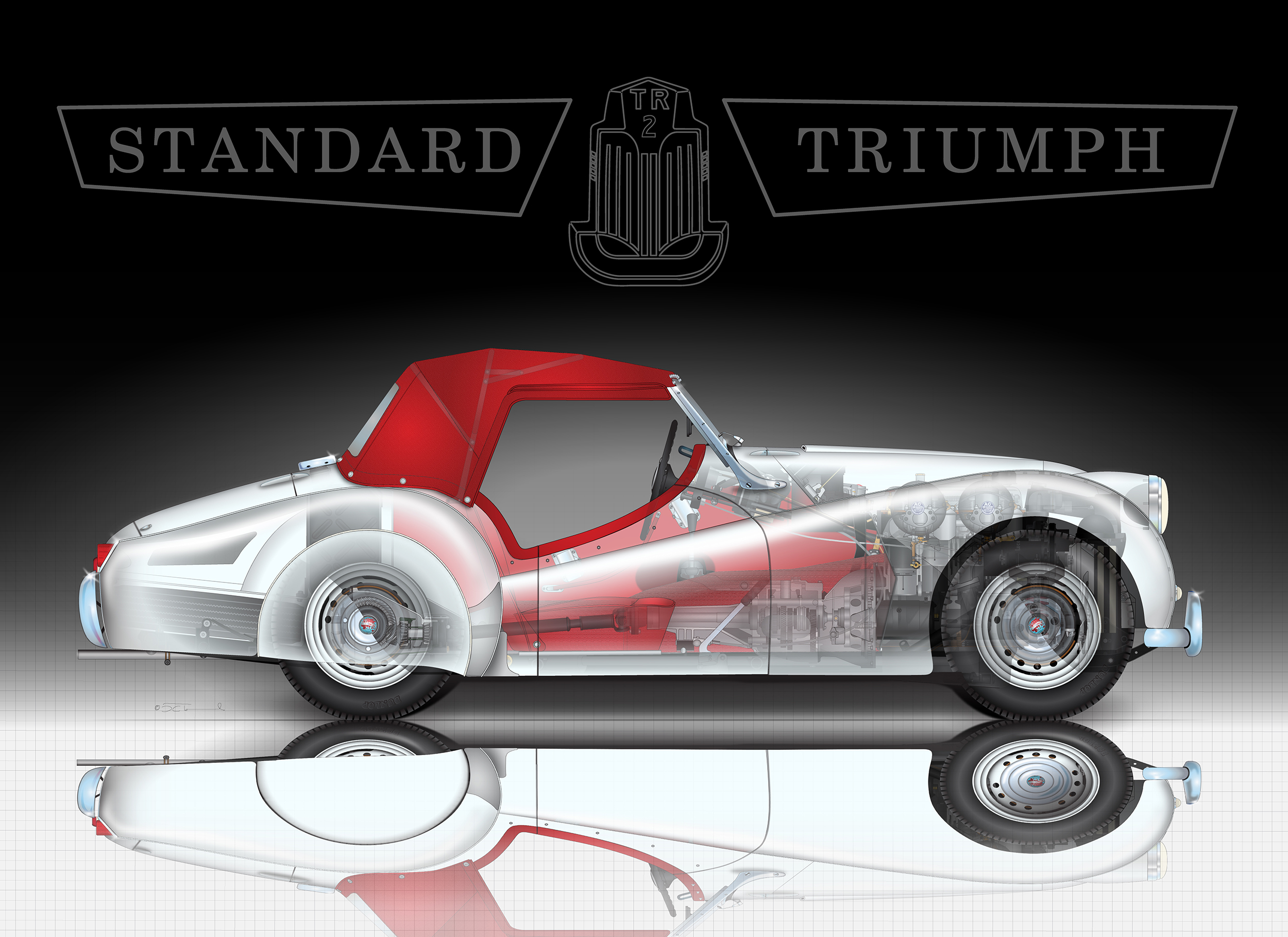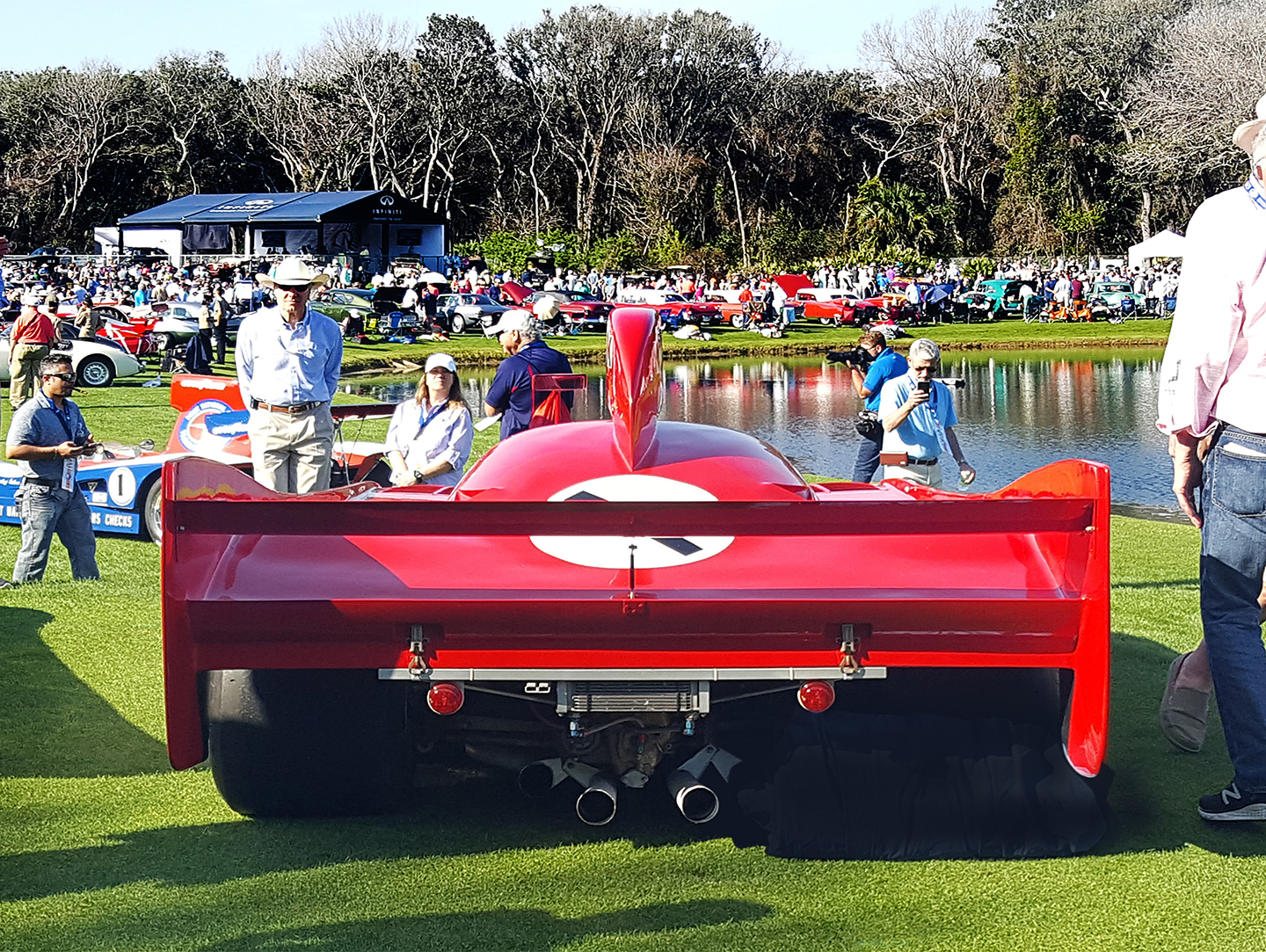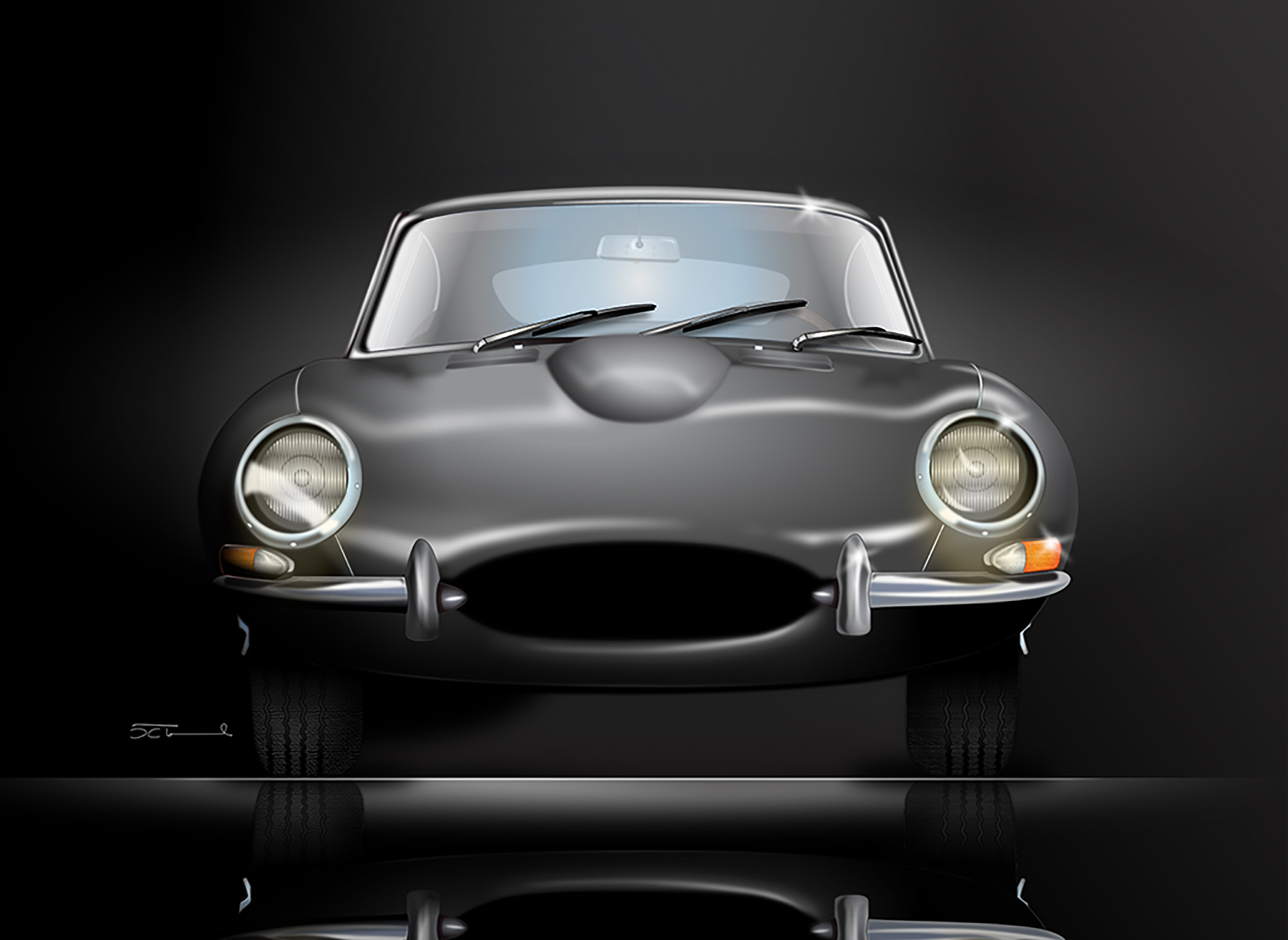 Being forced off the road for the past few months has meant that Bill Pack and I have been able to spend more time creating more lenticular art. Our latest additions are the Jaguar E-Type S1 and the #13 Cobra Daytona that won its class at the 1965 24 Hours of Le Mans. These two recent additions join the Porsche 356B in our series of lenticular prints which will eventually include the Porsche 550 Spyder, Porsche 904, Porsche 911, Porsche 912, Jaguar C-Type, Mini Cooper MK1 “S”, Lister Jaguar and others.
Being forced off the road for the past few months has meant that Bill Pack and I have been able to spend more time creating more lenticular art. Our latest additions are the Jaguar E-Type S1 and the #13 Cobra Daytona that won its class at the 1965 24 Hours of Le Mans. These two recent additions join the Porsche 356B in our series of lenticular prints which will eventually include the Porsche 550 Spyder, Porsche 904, Porsche 911, Porsche 912, Jaguar C-Type, Mini Cooper MK1 “S”, Lister Jaguar and others.

How a lenticular lens works
Lenticular printing is a multi-step process which consists of creating a lenticular image from at least two images, and combining it with a lenticular lens. This process can be used to create various frames of animation (for a motion or holographic effect), offsetting the various layers at different increments (for a 3D effect), or simply to show a set of alternative images which may appear to transform into each other. Once the various images are collected, they are flattened into individual, different frame files, and then digitally combined into a single final file in a process called interlacing.
From there the interlaced image can be printed directly to the back (smooth side) of the lens, or it can be printed to a substrate (ideally a synthetic paper) and laminated to the lens. When printing to the backside of the lens, the critical registration of the fine “slices” of interlaced images must be absolutely correct during the lithographic or screen printing process or else “ghosting” and poor imagery might result.

Close up of lenticular print
The combined lenticular print will show two or more different images simply by changing the angle from which the print is viewed. If more (30+) images are used, taken in a sequence, they can even show a short animation sequence of about one second. Though normally produced in sheet form, by interlacing simple images or different colors throughout the artwork, lenticular images can also be created in roll form with 3D effects or multi-color changes. Alternatively, one can use several images of the same object, taken from slightly different angles, and then create a lenticular print which shows a stereoscopic 3D effect. 3D effects can only be achieved in a side-to-side (left-to-right) direction, as the viewer’s left eye needs to be seeing from a slightly different angle to the right to achieve the stereoscopic effect. Other effects, like morphs, motion, and zooms work better (less ghosting or latent effects) as top-to-bottom effects, but can be achieved in both directions.
Available Lenticular Art — from $2850
Limited edition (only 75 of each will be pressed) lenticular art prints by Bill Pack and David Townsend include black hardwood float frame, hanging hardware installed and shipping via FedEx.












